Protecting Roadsides
Roadsides are more than mere stretches of concrete flanked by grass. They are prime locations for wildflowers and play a crucial role in sustaining our environment and economy.
Critical pollinator habitat
Roadsides serve as a vital stages for one of nature’s most crucial actors — pollinators. By reducing mowing along roadsides, we create havens for pollinators like bees and butterflies. The wildflowers that flourish in these areas provide essential nectar and pollen, aiding the health and diversity of pollinator populations. Preserving and enhancing these habitats contribute to the overall well-being of our ecosystems.
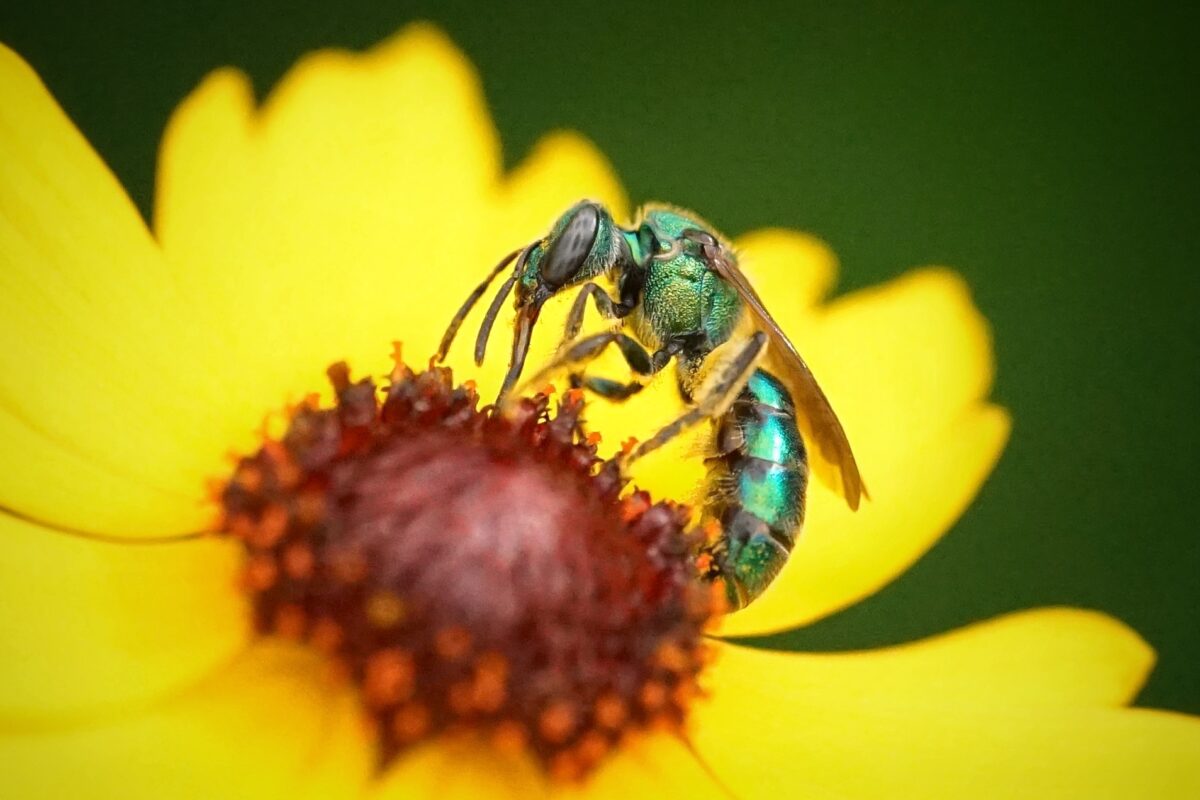
Suitable wildflower habitat
Undisturbed or minimally disturbed roadsides become ideal habitats for a myriad of native wildflowers and grasses, many of which struggle to thrive in highly managed environments. Providing conditions that allow these natives to thrive not only adds a touch of natural beauty to our surroundings but also supports a rich and varied ecosystem.
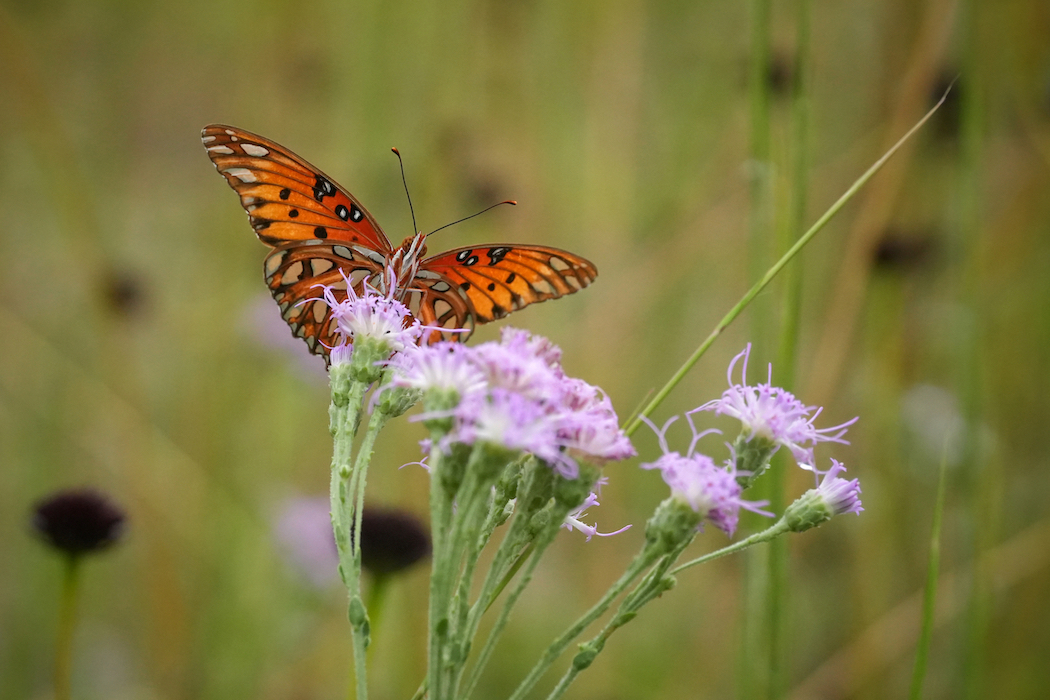
Transportation resilience
Roadsides offer a nature-based solution to enhance the resilience of our transportation system. By reducing mowing, roadsides can become more biodiverse, supporting native plants that help mitigate stormwater impacts. This approach not only strengthens the resilience of the infrastructure but also improves the reliability of the transportation network.
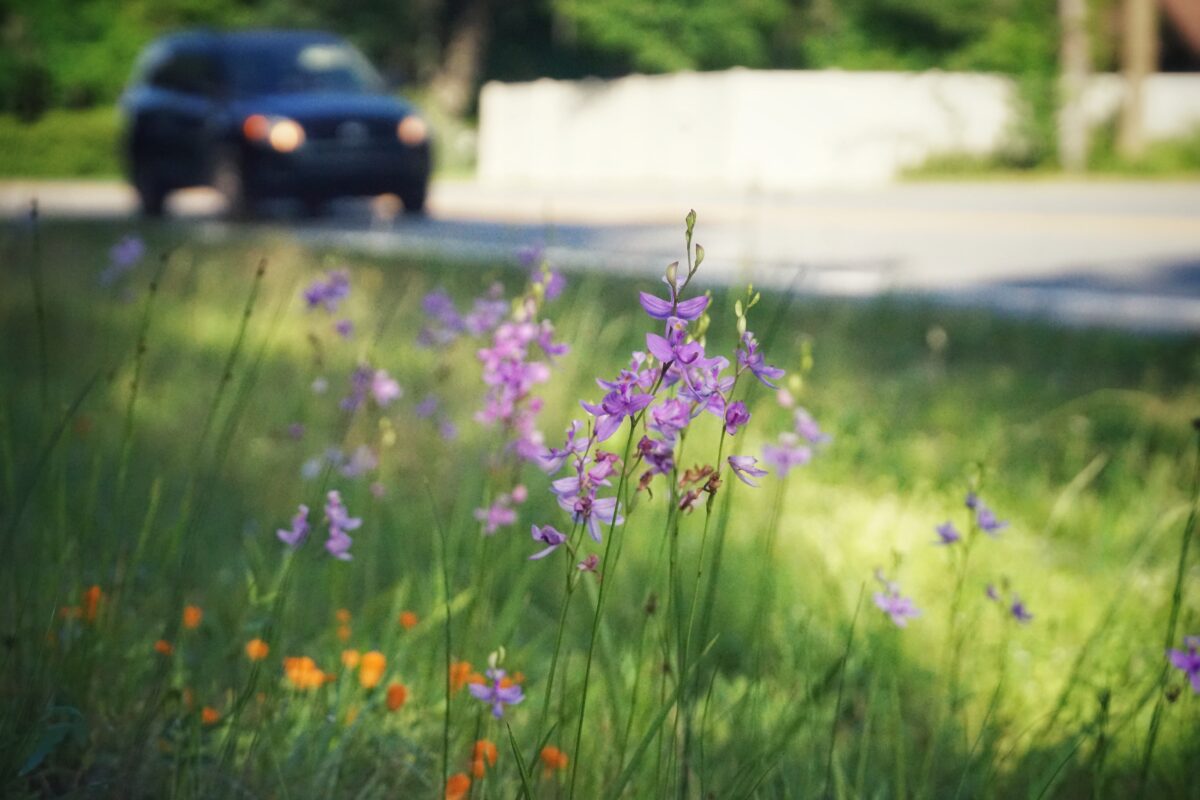
Ecotourism
Roadsides act as natural canvases, showcasing the vibrant colors and diverse forms of wildflowers. Embracing this untamed beauty can become a draw for ecotourism. Travelers increasingly seek authentic and unspoiled natural experiences. Appropriately managed roadsides, teeming with wildflowers and buzzing with pollinators, can attract nature enthusiasts and photographers. This influx of ecotourists not only boosts local economies through increased tourism but also fosters a sense of environmental stewardship as visitors appreciate the delicate balance of nature.
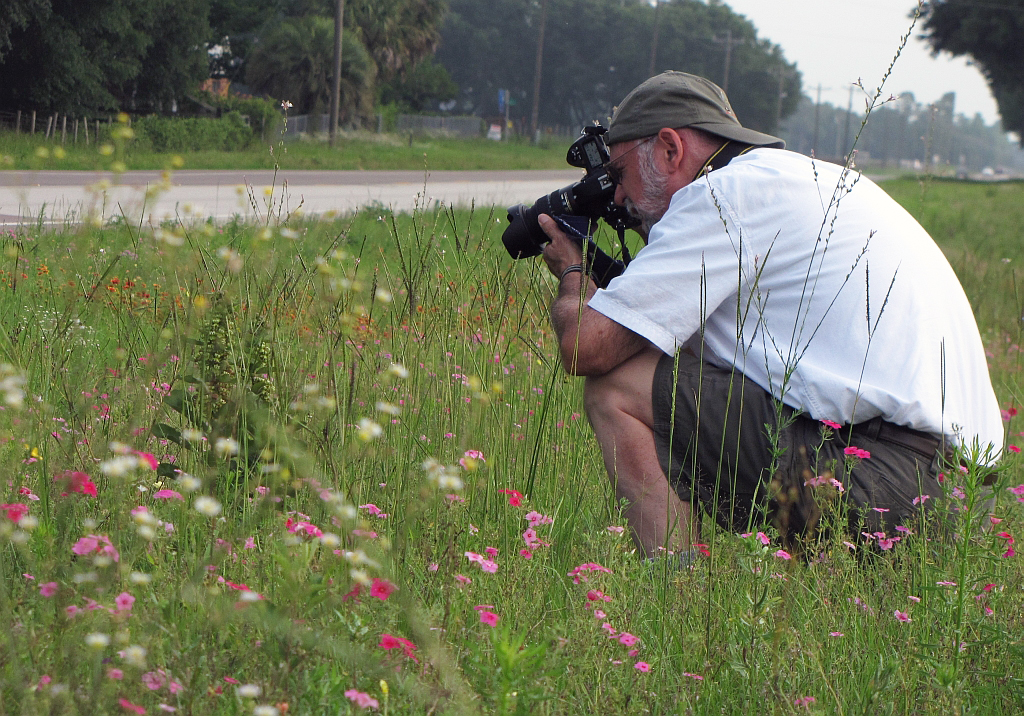
Roadside etiquette:
- Click it, don’t pick it! Many native wildflowers reproduce only by seed. Picking a flower reduces the ability of a population of wildflowers to sustain itself.
- It’s the law. Picking the flowers of any endangered or threatened species is illegal in Florida (Florida Statute 581.185).
- Don’t be a hazard. Stopping alongside a road can be hazardous to you and other motorists. It’s best to view roadside wildflowers from your vehicle.
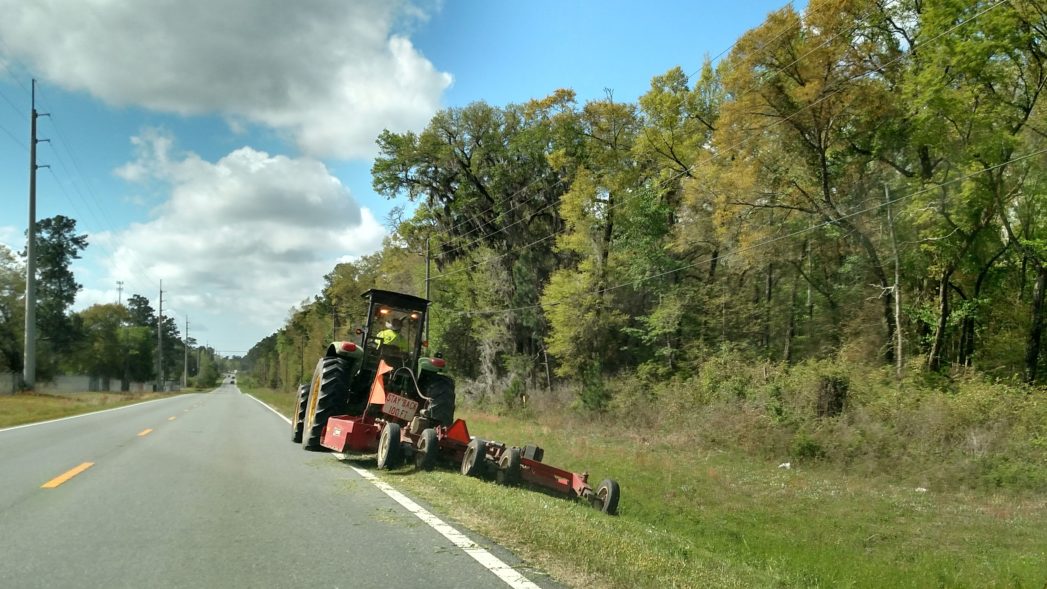
Ecological and economic impacts of reduced mowing
Traditional mowing practices often disrupt the natural life cycles of flora and fauna. By allowing roadsides to flourish with diverse vegetation, we create resilient ecosystems that provide habitats for various species. This shift promotes biodiversity, improves soil health and mitigates the negative impacts of frequent disturbance.
Beyond their ecological significance, roadsides also have a direct impact on our economy. Implementing reduced mowing practices significantly lowers vegetation maintenance costs for state and local highway maintenance departments. The financial savings can be redirected to more pressing needs within communities, such as infrastructure improvements or education. This simple shift in maintenance strategy demonstrates a commitment to fiscal responsibility without compromising environmental health.
What is a wildflower roadside?
A wildflower roadside is a stretch of land along a roadway where native wildflowers and grasses are allowed to grow and thrive. These areas not only add natural beauty to our drives — they also support pollinators, protect water quality, reduce roadside maintenance costs and lower environmental impact.
Wildflower roadsides exist within the Right of Way (ROW) — publicly owned land adjacent to roads, typically managed by state or county agencies. The ROW includes several key zones:
- Safety strip: A narrow, regularly mowed area immediately next to the pavement. This provides a clear zone for motorists to pull over.
- Swale: A shallow, grassy ditch that manages stormwater by slowing, filtering and directing runoff away from the road.
- Backslope: The gently sloping area beyond the swale that rises up to meet the natural ground level.
- Utility corridor: A section of the ROW that contains infrastructure such as power lines, water pipes or communication cables.
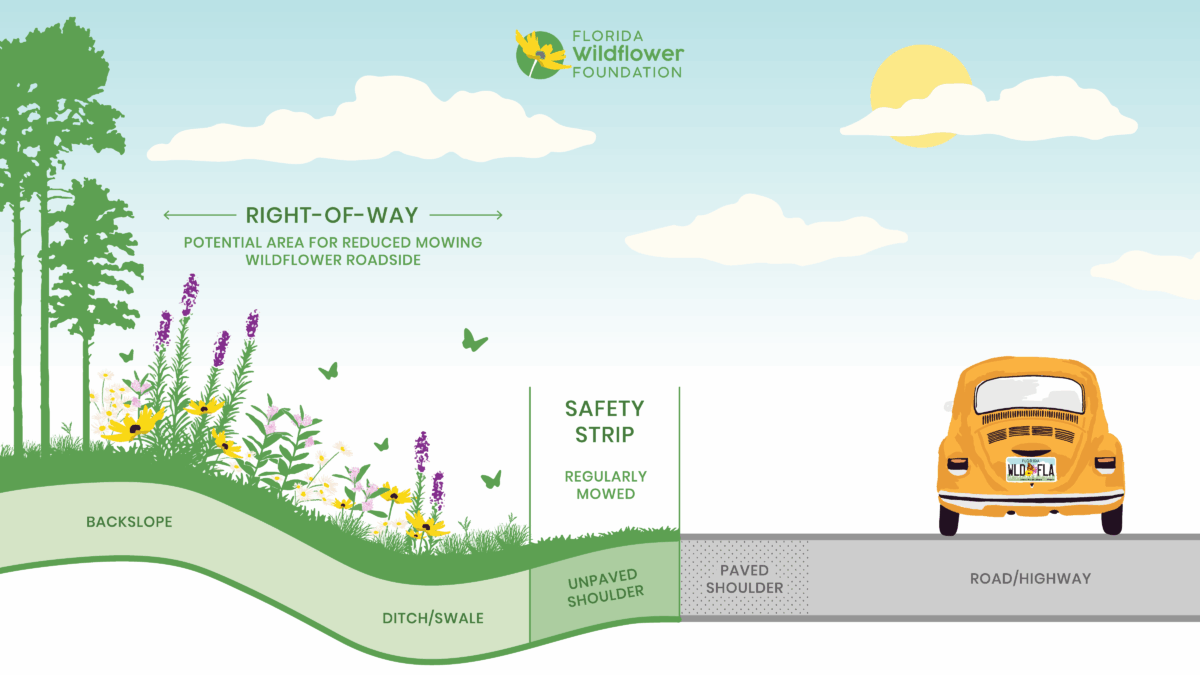
Why wildflowers?
When mowing is reduced beyond the safety strip, native wildflowers and grasses can flourish. This creates many environmental benefits:
- Reduced mowing means less fossil fuel use and fewer greenhouse gas emissions
- Deep-rooted native plants store carbon and stabilize soil
- Strong root systems slow runoff, reduce erosion, and help safeguard drinking water
What makes a good wildflower roadside?
Not every roadside is suited for wildflower management, but good candidates often share these traits:
- Existing (naturally occurring) native wildflowers already present
- Adjacent to conservation lands or natural areas
- Few driveways or business entrances
- ROW at least 5–6 feet wide
- Minimal to no invasive species present
Identifying and preserving the right roadside sites helps ensure native wildflowers can thrive year after year. With thoughtful management, these spaces can become living corridors that benefit both people and nature.
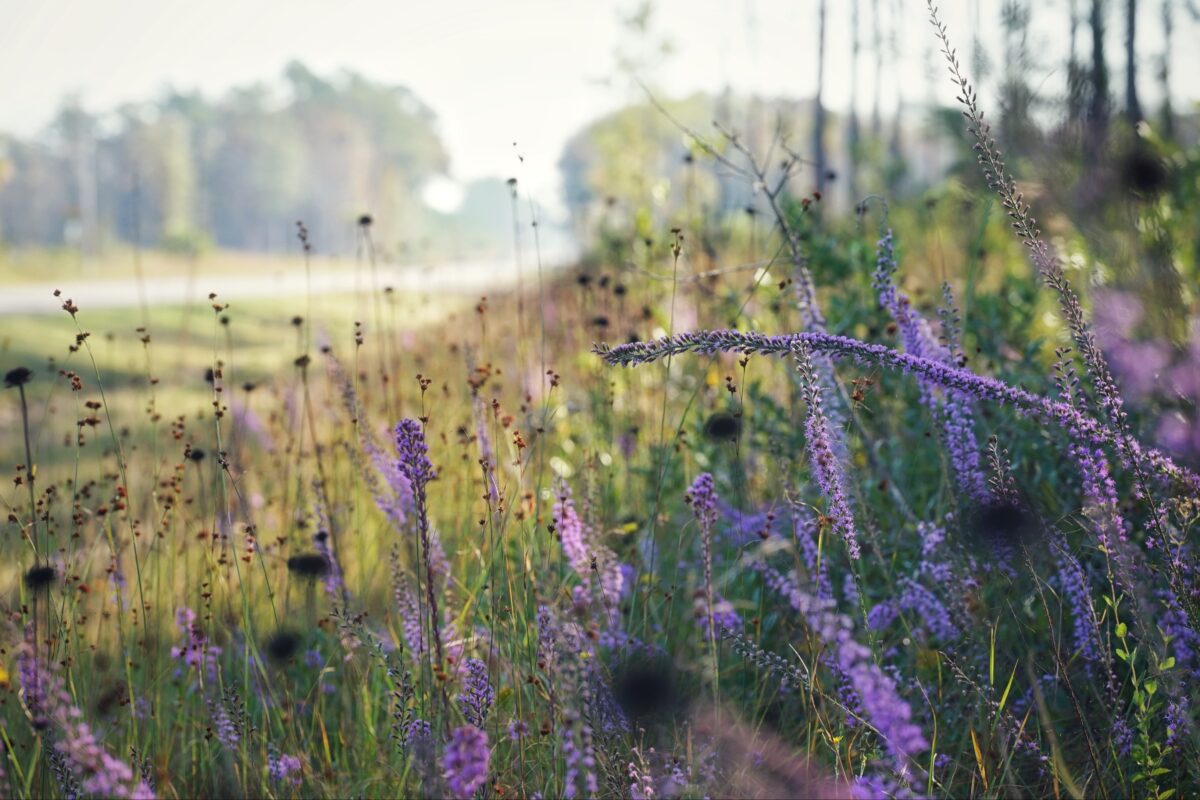
How the Florida Wildflower Foundation helps
The Florida Wildflower Foundation works with the Florida Department of Transportation (FDOT) district wildflower coordinators and maintenance yards, as well as county and city public works departments to identify native wildflowers on roadsides and provide guidance for appropriate management.
Seasonal surveys
Our experts can conduct seasonal surveys* of roadsides and utility rights-of-way to locate and characterize native wildflower areas. Surveys are conducted in spring, summer and fall to ensure a comprehensive species inventory, and are generally limited to areas with naturally occurring native wildflowers and grasses.
*Surveys require approval/input from the appropriate roadside and utility rights-of-way managers.
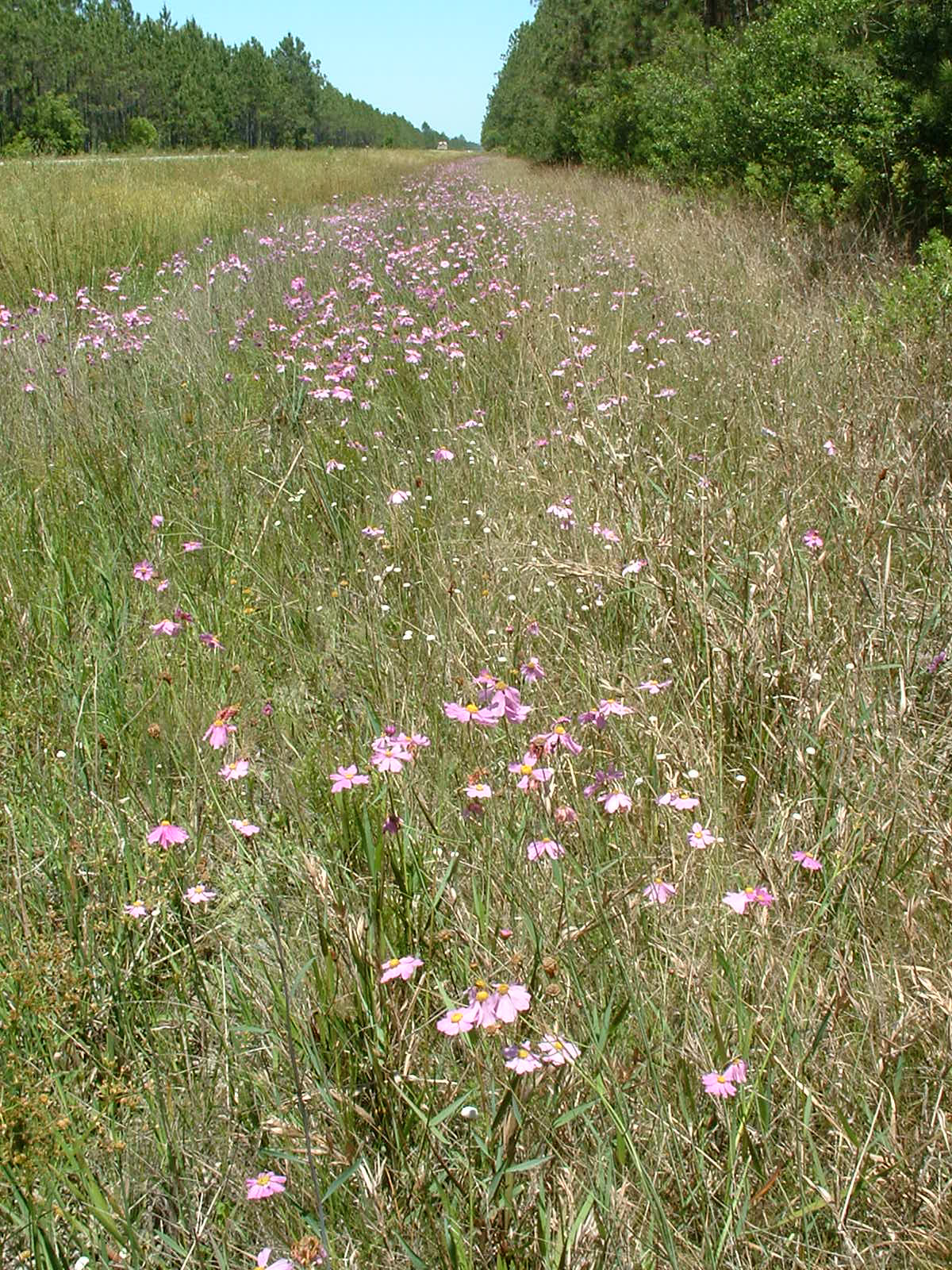
Management plans
Once a roadside has been surveyed, we can make recommendations for managing the wildflower populations for seasonal beauty, to boost pollinator habitat, and to maximize wildflower seed dispersal and germination. We can provide management plans and standard operating procedures (SOPs) that include guidelines for mowing extent, width and frequency, and may also address the removal of invasive species when present.
Note: The Foundation is not responsible for the implementation of management plans or SOPs, and does not have the authority to enforce them. We can only make recommendations.
Regional support
Foundation representatives can provide support for volunteers as they work with their counties and the Florida Department of Transportation. For inquiries on how you can get started, contact Marina Mertz, Florida Wildflower Foundation Roadside Program Coordinator.
How you can help
Identify potential wildflower areas
When you see wildflowers on roadsides, use our form to let us know. We will identify the agency responsible† for maintaining the roadside and may be able to advise how to effectively manage it for pollinators. When you contact us, identify the road and include beginning and end points of the potential wildflower area. If possible, include notes about wildflower and weed species seen in spring, summer and/or fall, as well as habitat type or concerns.
Roads adjacent to conservation areas are good places to start looking for potential wildflower areas. That’s because they are often in rural areas with wide rights-of-way and existing roadside wildflowers that could be managed through reduced mowing. The Florida Natural Areas Inventory can help you locate your county’s conservation areas.
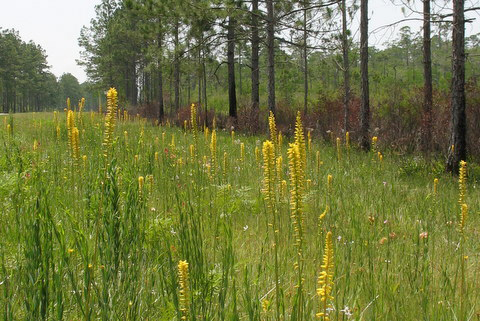
†State highways are maintained by the Florida Department of Transportation (FDOT). The state is divided into eight maintenance districts, each with its own wildflower coordinator. Your district’s coordinator can put you in touch with the local maintenance yard in charge of roadside mowing. Click here for a list of FDOT district wildflower coordinators. County roads are generally maintained by the county’s public works department. Your county’s website should provide a departmental or staff directory with contact information.
Become a Wildflower Watcher
While there are many roadsides across the state that support native wildflowers, our Wildflower Watchers program only places volunteers on sites that the Florida Wildflower Foundation has formally surveyed and where a management plan or agreement is in place between FWF and the roadside manager. Once a roadside has been designated as a wildflower area, volunteers can help ensure it is properly maintained. These “Wildflower Watchers” take part in training where they learn how to seasonally survey their assigned roadsides to provide long term data on species abundance and richness, give feedback on efficacy of the management plan, monitor mowing compliance, and report any untimely activity to the roadside manager.
If you’re interested in becoming a Wildflower Watcher, reporting an issue with a roadside already in our program, or helping to get a roadside enrolled in the program, please fill out our form. To find out if a roadside is part of the Foundation’s program, contact Marina Mertz, Roadside Program Coordinator.
Wildflower Area signs
Signs are often used to designate the beginning and end points of a wildflower area. These signs aid mowers who are maintaining the areas and help advertise their locations to the public. If a sign has not been installed, you can request one from the roadside manager.
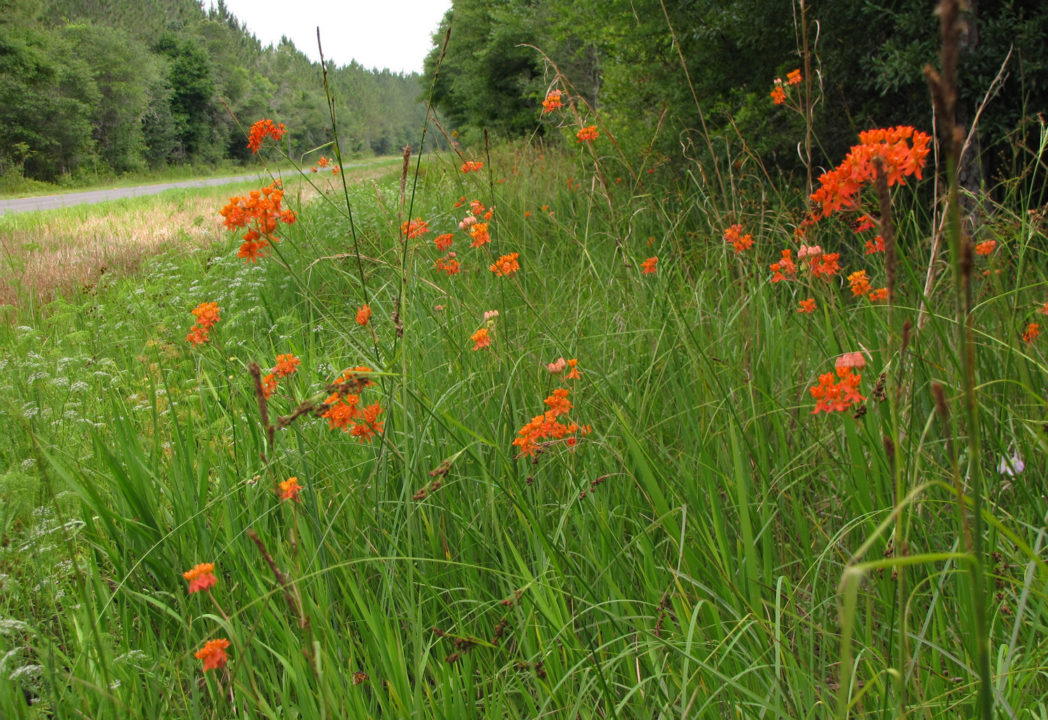
Adopt a wildflower resolution
Counties and cities can adopt a Wildflower Resolution — a pledge to conserve roadside wildflowers by implementing management strategies like reduced mowing. If your city or county has not yet adopted a Wildflower Resolution, you can take action to advocate for its adoption.
Click here to determine whether your county or city has adopted a Wildflower Resolution. If there is no resolution in place, our “How to Get Started” guide provides step-by-step instructions to initiate and facilitate the adoption process. For counties and cities that have already adopted a resolution, it might require revisions or updates to align with evolving needs.
For further assistance with getting a Wildflower Resolution adopted, please fill out our form.
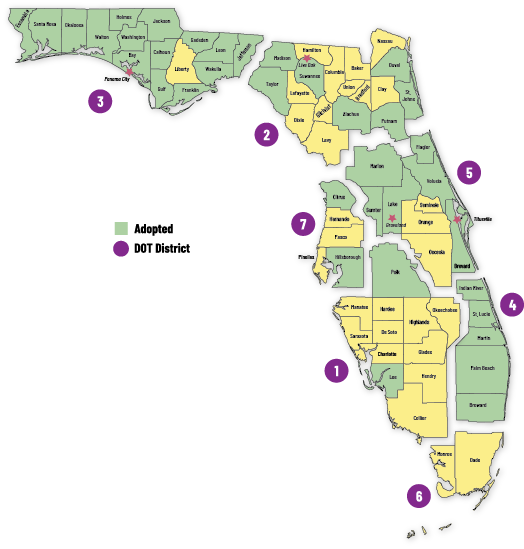
FDOT Wildflower Management Program
The Florida Department of Transportation’s Wildflower Management Program includes guidelines for nominating natural areas of wildflowers for special management to increase their abundance and visibility. The program laid the groundwork for reduced and carefully timed mowing to boost pollinator habitat while protecting the biodiversity needed to sustain healthy ecosystems and wildlife populations.
Through the adoption of wildflower resolutions, counties and municipalities can nominate FDOT-maintained roadsides within their boundaries as Wildflower Areas. The district wildflower coordinator then will assess the nominations in terms of safety, opportunities to reduce mowing, and natural abundance of wildflowers. Once the district maintenance engineer approves the nomination, a management plan for the area is crafted and turned over to the district maintenance yard or the contractor maintaining the area. See a list of FDOT district wildflower coordinators.
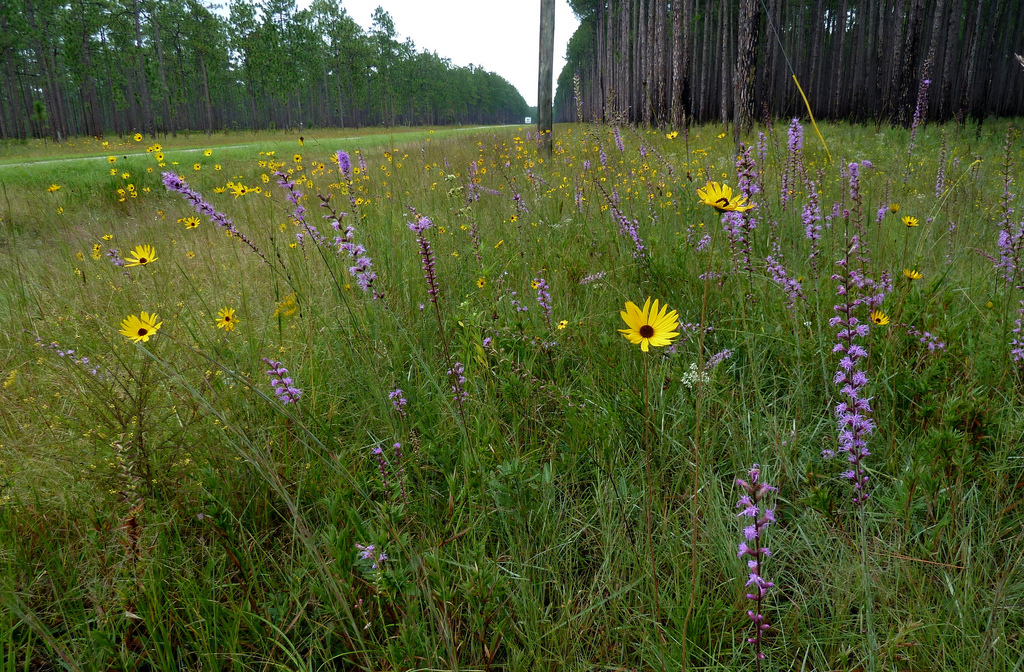
Resources
- Economic Impact of Ecosystem Services Provided by Ecologically Sustainable Roadside Right of Way Vegetation Management Practices — The dollar value of ecosystem services provided by roadside vegetation in Florida.
- Madison County Energy Conservation Study 2012-2013 Survey of Roadside Vegetation
- Safety Effects of Reduced Mowing
- Best practices: Establishing and maintaining roadside plantings (FDOT) (Dec 2008) — A scientific look at how selected native plant species can persist and flourish on Florida’s roadsides.
- Economic and Ecological Benefits of Roadside Native Wildflower Plantings — Select study findings on the benefits of native roadside plantings in the U.S.
- Conservation Value of Roadside Prairie Restoration to Butterfly Communities — A 2002 study comparing traditionally managed roadside with roadsides restored with native prairie plants in Iowa.
- Reducing Mowing Frequency Increases Floral Resource and Butterfly Abundance in Managed Roadside Margins — 2015 study on how mowing frequency affects both the abundance and mortality of butterflies and the abundance and species richness of herbaceous plants in bloom along highway margins.
- Ecosystem and Vegetation Management website – U.S. Department of Transportation
- Click here for more highway habitat research, and use the search terms “vegetation,” “habitat” or “wildflower.
